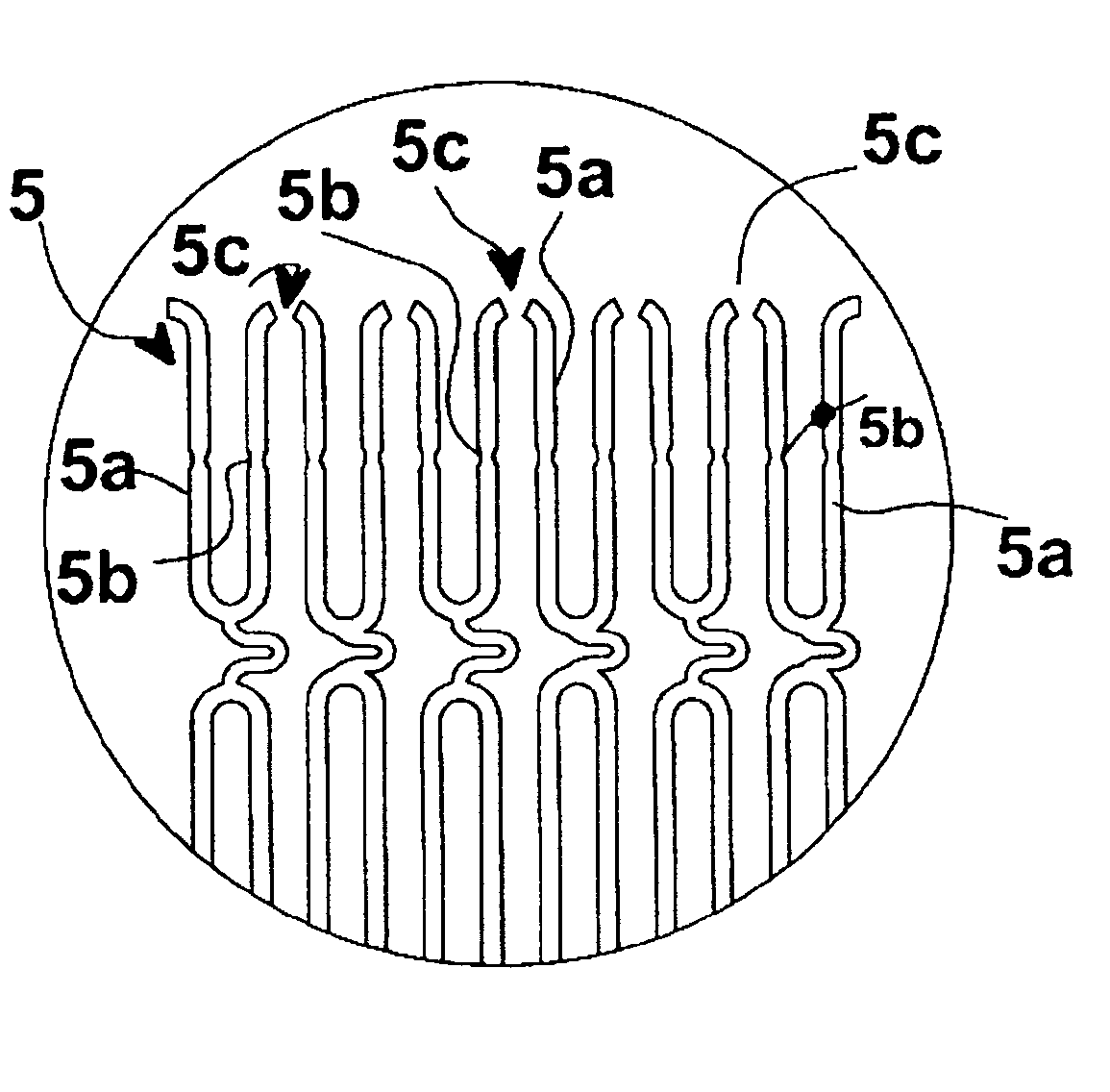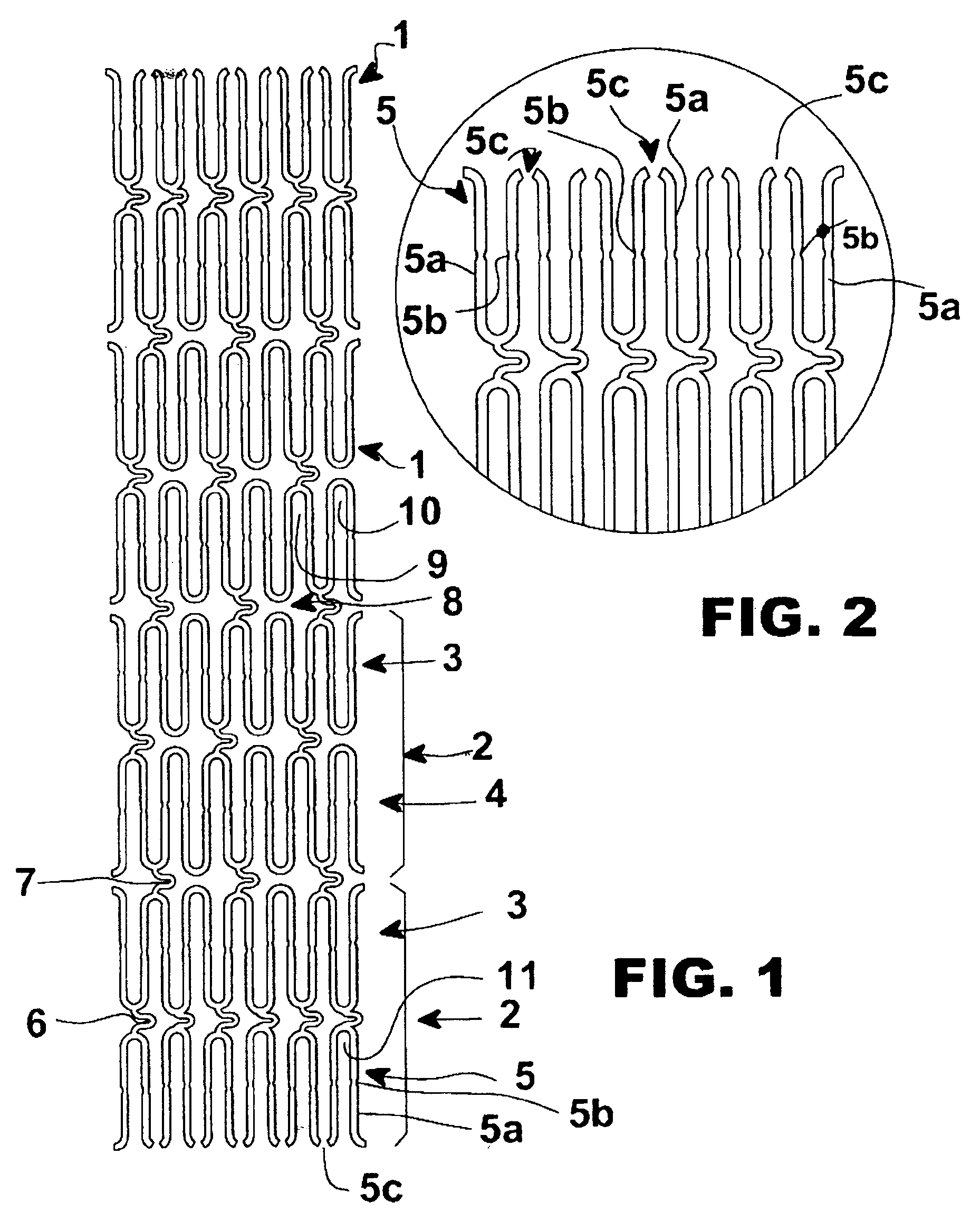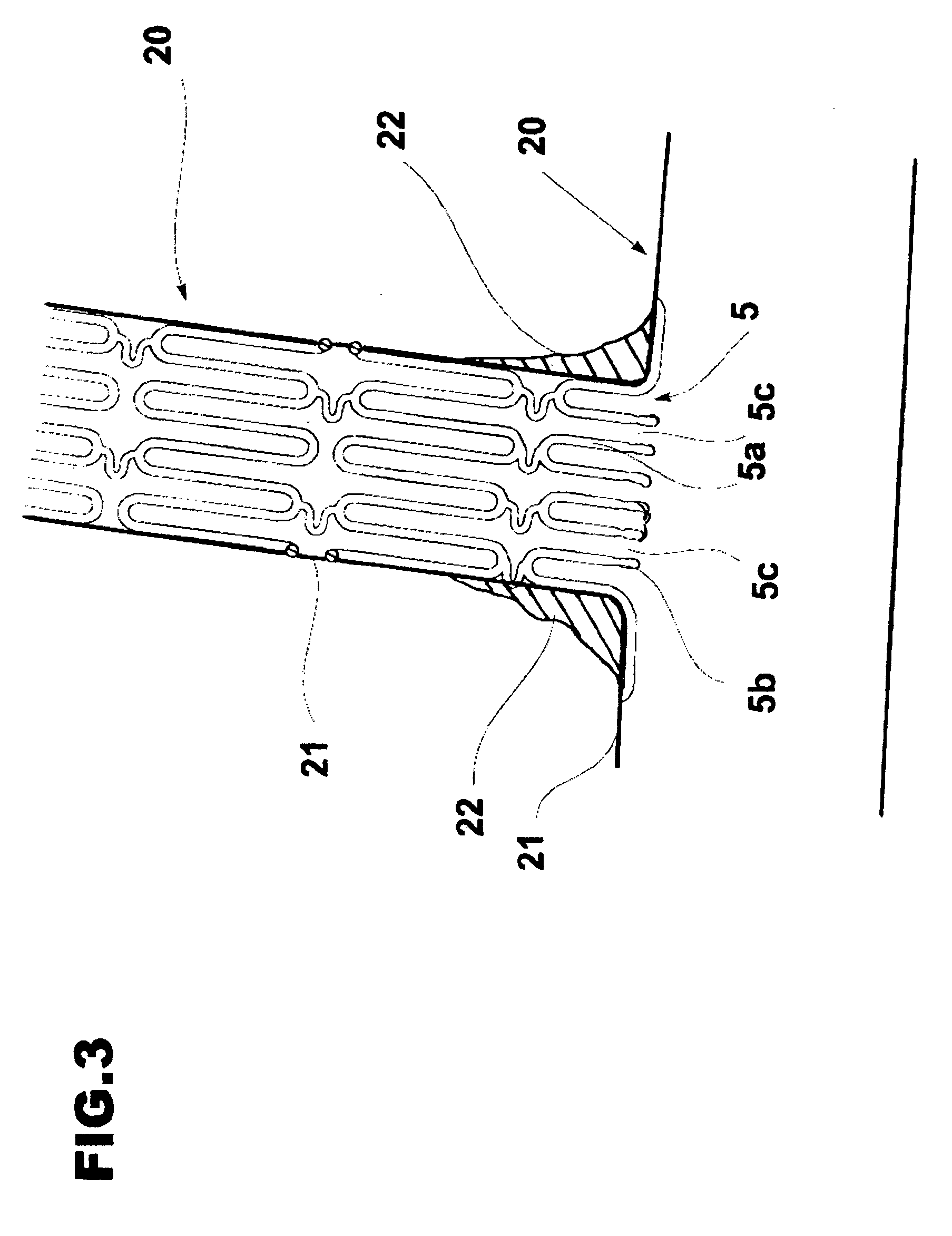Stent for ostial lesions and vascular bifurcations
a technology which is applied in the field of stents for ostial lesions and vascular bifurcations, can solve the problems of large percentage of failures in the results expected from this kind of operation, calcified arteries are serious problems, and the effect of expanding devices such as stents is to increase the dilatation
- Summary
- Abstract
- Description
- Claims
- Application Information
AI Technical Summary
Benefits of technology
Problems solved by technology
Method used
Image
Examples
Embodiment Construction
)
[0028] In different figures, the same reference numbers and / or letters indicate the same or corresponding parts.
LIST OF THE MAIN REFERENCES
[0029] (1) Tubular body of the stent
[0030] (1a) Skeletal members forming the tubular body (1).
[0031] (2) Sections of the tubular body.
[0032] (3) First row of each section (2).
[0033] (4) Second row of each section (2).
[0034] (5) End row.
[0035] (5a) Longitudinal branches of the end row (5).
[0036] (5b) Sectional weakening [means for expansive bending]
[0037] (5c) Open extremities [means for expansive bending]
[0038] (6) First simple engaging bridges [between first (3) and second (4) rows].
[0039] (7) Second engaging bridges [between sections (2)].
[0040] (8) Separation between sections (2) and rows (3) (4).
[0041] (9) Short entrance.
[0042] (10) Long entrance
[0043] (11) Outer entrance
[0044] (20) Application vascular conduit
[0045] (21) Vascular walls [endothelium]
[0046] (22) Lesion.
[0047] The stent for vascular ostial and bifurcation lesi...
PUM
 Login to View More
Login to View More Abstract
Description
Claims
Application Information
 Login to View More
Login to View More - R&D
- Intellectual Property
- Life Sciences
- Materials
- Tech Scout
- Unparalleled Data Quality
- Higher Quality Content
- 60% Fewer Hallucinations
Browse by: Latest US Patents, China's latest patents, Technical Efficacy Thesaurus, Application Domain, Technology Topic, Popular Technical Reports.
© 2025 PatSnap. All rights reserved.Legal|Privacy policy|Modern Slavery Act Transparency Statement|Sitemap|About US| Contact US: help@patsnap.com



